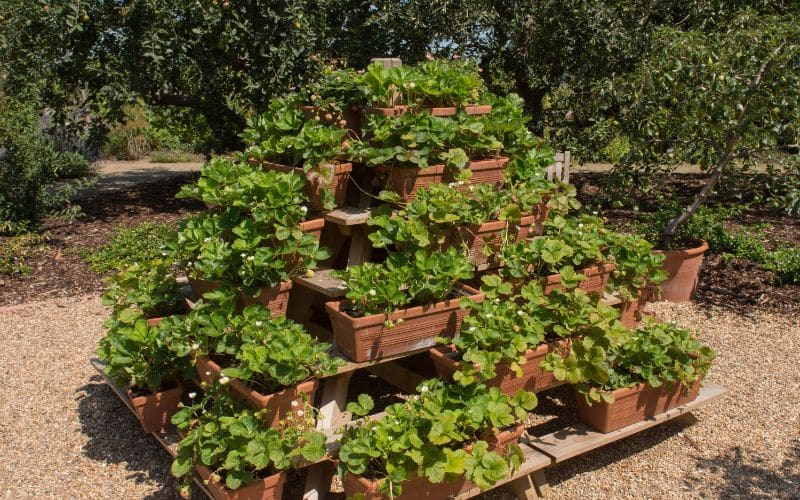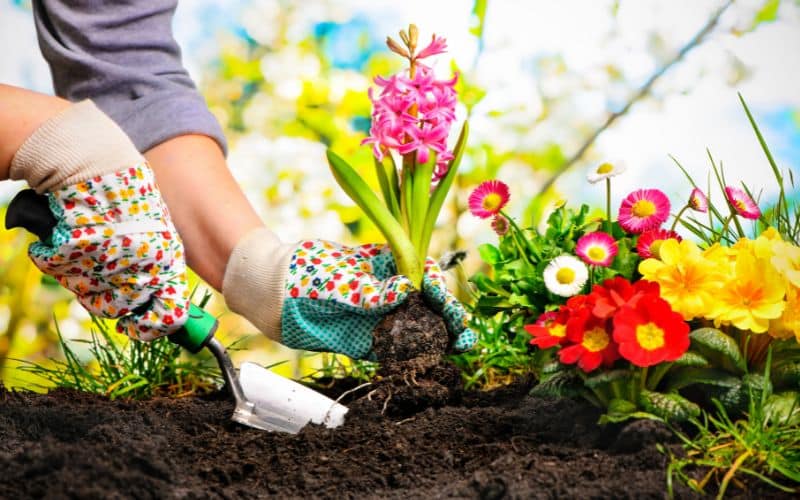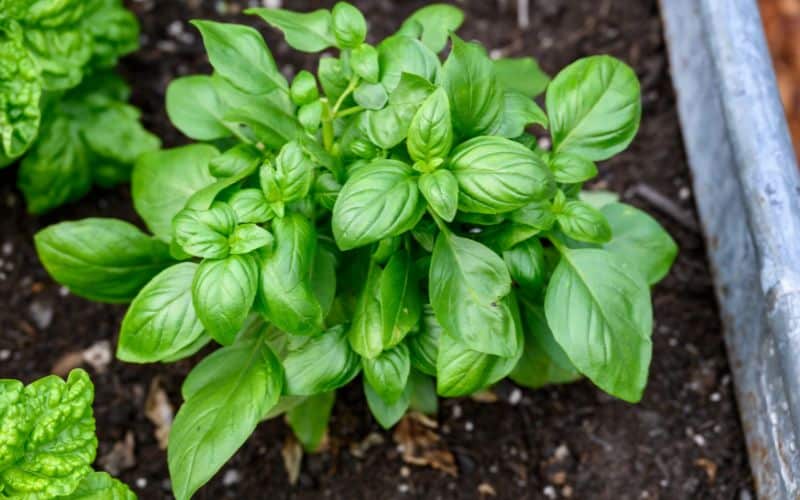
Gardening offers a enjoyable and calming experience that is accessible to almost everyone. Whether it’s cultivating stunning flowers, tasty vegetables, or aromatic herbs, gardening is a hobby that has evolved to incorporate the latest trends. Recently, there has been a surge of interest in various gardening trends, such as aqua gardening and vertical gardens. Another trend that has gained significant attention is the garden pyramid.
What Is A Garden Pyramid?
A garden pyramid is a method of gardening that involves growing plants on a pyramid-shaped structure. Each level of the pyramid is designated for a different type of plant, making gardening enjoyable, less challenging, and highly productive. Similar to the shape of an Egyptian pyramid, the planters are stacked on top of one another in this type of pyramid planter arrangement.
Pyramid gardening is a method that optimizes the utilization of limited garden space and enhances plant drainage and aeration. It is especially beneficial for urban gardeners or individuals with small outdoor areas who desire to cultivate fruits, vegetables, or flowers but lack the space required for conventional garden beds.
The possibilities for building a plant pyramid garden are endless since there are no specific guidelines or instructions. This means that you can let your imagination run wild and create a unique and imaginative garden in your backyard. So, if you’re seeking an innovative way to enhance your garden, why not start planting a pyramid garden today?
Why Are Garden Pyramid Planters Popular?
There are numerous advantages of using garden pyramid planters instead of conventional gardening techniques.
- Easy accessibility for planting, tending, and harvesting due to the raised garden beds off the ground.
- The deep layers in pyramid planters allow for a large soil volume, benefiting root systems and promoting vigorous plant growth.
- Reduced water and maintenance requirements as plants that require more water can be placed at the bottom, while those needing less can be placed on top.
- Adding beauty and interest to any backyard, pyramid planters feature a clean, sleek wooden structure combined with the natural beauty of plants.
- Customizability to fit your space, with the option to build or order a pyramid planter with specific dimensions and various wood finishes to match your style and design.
Pyramid gardens offer a compact solution for growing a diverse range of fruits, vegetables, and herbs. One particularly favoured application of a pyramid garden involves cultivating strawberries, which is both enjoyable and easy, so there’s no need to feel overwhelmed!
Garden Tower Planter Ideas
Pyramid Strawberry Planter
The pyramid planter is an ideal solution for cultivating strawberries, vegetables, herbs, and flowers. With its durable and polished design, this planter will seamlessly blend into any yard while providing efficient organization and optimal plant health.
If you are a strawberry enthusiast with limited garden space, this pyramid planter is the perfect fit for you!
Slot Together Pyramid Planter
The core of this design is a slot-based system, which is both simple and clever. By making a few cuts in the pallet and arranging planks and plants, you can create a vertical garden that saves space.
What sets this design apart is its ability to be easily customized. You can change the shape of the slots, allowing for easy dismantling and relocation of the planter. Additionally, you can add or remove layers to adjust the height of the final product according to your preferences and needs.
Vertical Garden Pyramid Tower
For those seeking a space-saving option that accommodates numerous plants, the plant pyramid is an excellent choice. This pyramid planter boasts multiple tiers, resulting in an impressive appearance.
The largest tier encompasses four sides, while the two upper tiers each contain three sides. Consequently, there are six sides available for arranging plants and flowers, granting ample space for artistic plant combinations.
To enhance its aesthetic, it is recommended to position this planter within a garden bed or a sizable container surrounded by lush greenery that complements the colors of your chosen plants and flowers.
Strawberry Pyramid
In just an afternoon, you can create a beautiful and uncomplicated strawberry pyramid to make the most of strawberry season. The Strawberry Tiered Planter is an ideal project for novice builders. By providing additional room for growth, the plants will flourish and produce an abundance of strawberries.
The planters also offer the added benefit of preventing rot or mold, thus enhancing the quality of your strawberries.
Killer Pyramid Raised Garden Bed
In just an afternoon, you can construct a straightforward and sophisticated strawberry pyramid to honour the arrival of strawberry season. If you are new to building, the Strawberry Tiered Planter is an excellent guide to follow for your garden pyramid plan.
By providing ample room for growth, this planter enables the plants to yield more strawberries. Additionally, these planters contribute to enhancing the quality of your strawberries by reducing the risk of rotting or moulding.

An example is the Pyramid Garden of Direct Gardening
The terraced garden offers approximately 6 feet of space that can be used for growing vegetables, flowers, or a combination of both. The Pyramid Garden specifically accommodates 50 strawberry plants. It is made of easy-to-assemble corrugated aluminum bands that create three planting terraces, each with a depth of 6 inches. The bottom terrace has a diameter of 6 feet. The garden also comes with a complete built-in sprinkler that can be connected to your garden hose. Complete instructions are included. Please note: accessories sold separately.
The dimensions of the Pyramid Garden are as follows: The outer ring has a diameter of 6 feet. The middle ring has a diameter of 3½ feet, and the top ring has a diameter of 2 feet.
Rather than building one, you have the option to have it delivered to your location.
According to their site, plants will be delivered to your area of the country based on the shipping timeframes outlined on their website. They continually monitor weather conditions, and diligently adjust shipping schedules to ensure plants are delivered at the proper planting time for your region. However, due to the scorching hot weather conditions experienced in July and August, most plant items cannot be shipped during this period. The company prioritizes the well-being of the plants and strives to deliver them in the best possible condition.
Supplies such as seeds, fertilizer, and others, which are ordered separately from plant orders, will usually be shipped within 5 business days. However, if fertilizer is ordered together with a plant order, they will send it alongside your plants according to the designated timeline.
Tips & Tricks To Plant Pyramid Planters
Choose Your Materials Well
You can choose any type of wood for your garden bed, but it is crucial to avoid using pressure treated lumber due to its harmful chemicals that can contaminate the soil. This is particularly important if you plan on growing vegetables, as you want to prevent ingesting toxins from your homegrown food. Opting for reclaimed wood or PAR pine planks is a suitable choice for this project.
Additionally, you will need a mitre or hand saw, electric drill with drill bits, screws, a measuring tape, a pencil for marking measurements, and enough soil to fill the completed garden bed. It is also essential to have seeds or plants readily available.
Placement Planning
It is crucial to plan the placement of your garden bed before starting the project, unless you are constructing a small pyramid raised bed. This is because the finished result will become quite heavy, particularly when filled with soil.
Additionally, it is essential to consider the sunlight requirements and optimal space for the plants you intend to grow. Advanced planning becomes even more significant if you create multiple garden beds, as it allows for maximizing space and positioning the plants in areas where they can flourish.
Getting The Best Drainage
When planning to plant a pyramid garden, it is important to consider that water may not drain efficiently due to the shape of the planter. This can result in water pooling at the center, causing potential issues such as root rot for your plants.
To prevent this, ensure proper drainage by creating a minimum 1-inch deep hole in the center of the pyramid planter. Additionally, you can enhance drainage by lining the bottom of the planter with a layer of gravel.
Filling With Soil
If you are starting your garden by sowing seeds, it is advisable to wait until the soil has been watered before planting the seeds in each level. Start by adding soil to the bottom level, ensuring it is firmly packed and level, then introduce any plants you wish to use and proceed to the next level.
Repeat this process until the entire garden bed is filled, then gently water the soil. If you choose to water with a hose, use a water breaker to prevent the hose from displacing soil from the garden bed.
Enrich The Soil
To promote optimal growth of strawberries, the layers of the pyramid should be filled with a mixture of rich compost, clean sandy loam or sand, and peat. It is important to firmly compact the soil in each layer to create an acidic pH, which is beneficial for the plants.
Also, to develop healthy foliage, roots, and fruits, it is recommended to incorporate water-soluble organic fertilizer into regular irrigation and apply it every week.

Best Plants for Pyramid Gardens
Pyramid gardens are suitable for growing a wide variety of plants, although certain ones are better adapted for this type of gardening. Here is a selection of plants that thrive particularly well in pyramid garden:
- Herbs: Pyramid gardens offer a great space-saving solution for growing herbs such as basil, parsley, and thyme, which can thrive in the smaller levels.
- Leafy greens: Leafy greens like lettuce, spinach, and kale are excellent choices for pyramid gardens as they can be easily grown in the lower levels and harvested conveniently.
- Strawberries: Strawberries are highly favored for pyramid garden beds due to their exceptional growth in such a structure, making them suitable for the upper levels.
- Tomatoes: Tomatoes are a popular option for pyramid gardens and can be successfully grown in the larger pyramid levels.
- Peppers: Peppers, including bell peppers and chili peppers, are well-suited for the larger levels of the pyramid and serve as another great choice for this type of garden.
Unleash Your Gardening Potential With A Garden Pyramid
Discover the simplicity and charm of cultivating, tending to, and reaping the rewards of a garden pyramid. These alluring pyramid planters not only add beauty to your surroundings but also serve as ideal homes for various flowers and small plants. With endless possibilities for personalization, you can construct a garden that will captivate your heart for countless seasons to come.
Unearth the multitude of advantages that accompany a garden pyramid and elevate your gardening prowess to new heights. Adopt the magic of a garden pyramid and watch your green thumb flourish.
Colin Macmillan is a seasoned entrepreneur and the CEO of Riverwood Landscape, a leading landscaping company based in Canada. He has been at the helm of the company since leaving high school, demonstrating his strong leadership skills and business acumen.
Colin’s expertise lies in various aspects of landscaping, including lawn care, interlocking, sod installation, and commercial maintenance. His hands-on approach and dedication to the craft have been instrumental in building Riverwood Landscape into a reputable brand.
One of his most notable achievements is the creation of a successful landscape franchise that services multiple locations. This accomplishment underscores his strategic thinking and ability to scale operations effectively.
Colin has also had the privilege of working with Guelph Hospital for landscaping and maintenance, a testament to the trust and reliability that his company has earned over the years.
His professional mission is to offer the best services and experiences for customers, a goal that he tirelessly pursues. Colin’s commitment to excellence and customer satisfaction continues to drive the growth and success of Riverwood Landscape.








